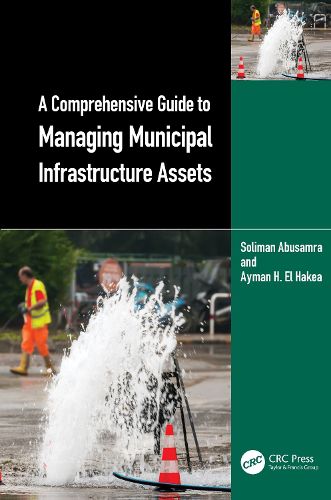Readings Newsletter
Become a Readings Member to make your shopping experience even easier.
Sign in or sign up for free!
You’re not far away from qualifying for FREE standard shipping within Australia
You’ve qualified for FREE standard shipping within Australia
The cart is loading…






Comprehensive and practical, this book provides an essential resource for educators, researchers, students, and those in public agencies and consultancies who are directly responsible for managing municipal infrastructure such as roads, water, and sewer pipes. The book is thorough in the integration of procedures that establish a cost-effective intervention plan using the latest technologies and management processes. It examines all the aspects of developing an optimal asset management plan for collocated municipal assets. It presents the evolution of asset management from data requirements to investment planning and priority programming of rehabilitation and maintenance. It offers a coordinated approach to effectively manage municipal infrastructure and offers integrated solutions that aid decision-makers in taking informed decisions on (1) when to maintain each asset, (2) which corridors shall be prioritized, and (3) what is the best intervention to undertake for each asset. It also offers a compelling vision of how infrastructure and cities will evolve by 2050, shaped by advancements in digital technology, transportation, governance, sustainability, resilience, and climate change. It provides invaluable insights for practitioners,
emphasizing how today's decisions and investments will directly influence the future of urban environments.
Features:
Presents the most current methodologies and practical applications of managing collocated municipal infrastructure. Includes case studies and practical examples for each step, as well as an extensive list of references for each asset class. Examines novel approaches for reduced lifecycle costs, enhanced conditions, improved level of service, reduced risk, increased maintenance effectiveness, and reduced service disruptions. Explores the future of urban infrastructure in 2050, helping practitioners to envision tomorrow's cities and make informed investment decisions in today's infrastructure.
$9.00 standard shipping within Australia
FREE standard shipping within Australia for orders over $100.00
Express & International shipping calculated at checkout
Comprehensive and practical, this book provides an essential resource for educators, researchers, students, and those in public agencies and consultancies who are directly responsible for managing municipal infrastructure such as roads, water, and sewer pipes. The book is thorough in the integration of procedures that establish a cost-effective intervention plan using the latest technologies and management processes. It examines all the aspects of developing an optimal asset management plan for collocated municipal assets. It presents the evolution of asset management from data requirements to investment planning and priority programming of rehabilitation and maintenance. It offers a coordinated approach to effectively manage municipal infrastructure and offers integrated solutions that aid decision-makers in taking informed decisions on (1) when to maintain each asset, (2) which corridors shall be prioritized, and (3) what is the best intervention to undertake for each asset. It also offers a compelling vision of how infrastructure and cities will evolve by 2050, shaped by advancements in digital technology, transportation, governance, sustainability, resilience, and climate change. It provides invaluable insights for practitioners,
emphasizing how today's decisions and investments will directly influence the future of urban environments.
Features:
Presents the most current methodologies and practical applications of managing collocated municipal infrastructure. Includes case studies and practical examples for each step, as well as an extensive list of references for each asset class. Examines novel approaches for reduced lifecycle costs, enhanced conditions, improved level of service, reduced risk, increased maintenance effectiveness, and reduced service disruptions. Explores the future of urban infrastructure in 2050, helping practitioners to envision tomorrow's cities and make informed investment decisions in today's infrastructure.